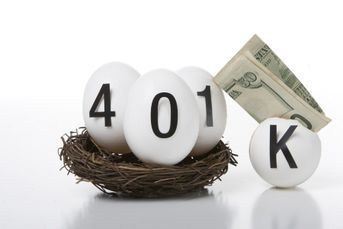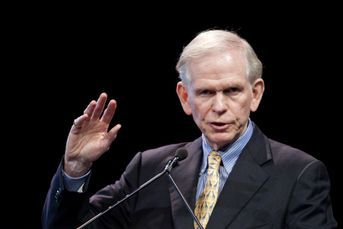Higher tax rates fail to dent economic growth
As the political fight over raising taxes for high-income Americans fades, so are predictions for negative economic fallout. The first boost in marginal income rates in 20 years is already reducing the U.S. budget deficit without tipping the economy into recession.
As the political fight over raising taxes for high-income Americans fades away, so are predictions for negative economic fallout.
The bill for President Barack Obama’s 2013 tax increases comes due April 15, and the first boost in marginal income rates in 20 years is already reducing the U.S. budget deficit without tipping the economy into recession.
“In advance one always hears the squeals of the oxen who would like everyone to think they are about to be gored,” said James Galbraith, an economist at the University of Texas at Austin. “Then it turns out that they are only nicked, and life goes on.”
(Don’t miss: 6 last-minute tax filing tips)
The U.S. government is projected to collect more than $3 trillion for the first time in the fiscal year ending Sept. 30, a 9.2% increase over last year, according to the Congressional Budget Office. CBO forecasts another 9% rise in 2015 and estimates that more than half of the increases in revenue stem from tax law changes.
Because of tax increases, spending cuts and economic growth, the federal budget deficit is projected to be 3% of gross domestic product this year. That’s less than half its 2012 level and the smallest budget deficit since 2007.
In January 2013, just after President George W. Bush’s tax cuts expired, Congress reset the top marginal income tax rate at 39.6%, the same level it reached under President Bill Clinton.
ADDITIONAL LEVIES
High-income taxpayers face additional levies, effective in 2013, to help pay for Mr. Obama’s health-care plan. That means those at the very top of the U.S. income scale face higher marginal tax rates than at any time since 1986.
The increases started generating revenue for the government in late 2012, when taxpayers began accelerating capital gains and bonus income to avoid paying at the higher rates.
The high-income tax increase sapped 0.25 percentage points from GDP in 2013, estimates Mark Zandi, chief economist at Moody’s Analytics Inc. in West Chester, Pa. That slight economic drag, he said, shouldn’t continue.
“For the most part, by summertime, the negative effects on the economy will have abated,” he said. “Most of the pain has been felt.”
Even congressional Republicans, who warned that the tax increases would destroy jobs, aren’t making a serious push to repeal them. They’re acting as though the new tax rates and increased take for the U.S. government are here to stay, even if they don’t like it.
House Republicans’ budget plan and draft tax-code revamp call for reshuffling the tax system in ways that would reduce top rates without reducing the amount of money the government collects. Also, the tax plan was designed so it wouldn’t cut the share of taxes paid by top earners.
Senate Republicans didn’t include a major rollback of Mr. Obama’s tax increases in their latest job-creation plan, instead focusing on repealing the 2010 health-care law and blocking regulations that would limit energy production.
That’s a concession to political reality, said Orrin Hatch of Utah, the top Republican on the Senate Finance Committee.
“We know we can’t do it with Democrats in control of the Senate,” he said, “so it’s going to be a feckless effort.”
UNDOING CUTS
It took Mr. Obama two presidential campaigns, four years in office and a past-the-wire legislative fight at the end of 2012 to undo a fraction of the tax cuts secured by his predecessor. Mr. Obama prevailed two years after he signed a temporary extension of the Bush tax cuts.
The result set the top marginal income tax at 39.6%, up from 35%, starting at $450,000 of taxable income for married couples and $400,000 for individuals in 2013. The top basic rate on capital gains and dividends rose to 20% from 15%.
Congress also reinstated limits on itemized deductions and personal exemptions for top earners. Those affect married couples with adjusted gross income of more than $300,000 and individuals with income of more than $250,000.
On top of all that, tax increases for the highest earners from the 2010 Affordable Care Act took effect in 2013. That amounts to a 3.8% tax on net investment income and a 0.9% tax on wages. Those taxes start at $250,000 of annual income for married couples and $200,000 for individuals.
A married couple with about $915,000 in annual income will pay $277,426 in payroll and income taxes for 2013, up 12% from 2012. That’s according to an example created by the Tax Policy Center in Washington.
The people affected by the tax increases include corporate executives, lawyers, doctors and people who report their business profits on their individual tax returns.
The tax increase constrains cash flow for the most successful small businesses, especially those with limited access to credit, and it’s one reason why the economic recovery has been slow, said Douglas Holtz-Eakin, a former director of the Congressional Budget Office.
“It would have been a good idea to get everyone back to work before you decided to redistribute the income,” he said. “You’ve raised the marginal tax on the return to both high-income labor and high-income saving and investments. There’s a clear incentive to do less of that.”
Kevin Maloney, president of Northeast Express Transportation Inc., a courier business in Windsor Locks, Conn., said the tax increases have affected his company. Mr. Maloney said his company, organized as an S corporation, generates a little less than $5 million a year in gross revenue and that he isn’t in the top tax bracket.
Politicians who support tax increases operate under a misconception that there is little real effect, Mr. Maloney said.
“A higher tax rate reduces our ability to recapitalize and reduces our ability to expand,” he said. “You keep your forklifts a little longer, you do whatever you can to stretch the dollars you’re left with.”
Much of the economic damage caused by the tax increases of 2013 had nothing to do with the expiration of the Bush tax cuts. Instead, the lapse of a 2-percentage-point payroll tax reduction took money out of consumers’ pockets at all income levels, said Ward McCarthy, chief financial economist at Jeffries.
‘MORE PAINFUL’
“It put a bite on consumer cash flows,” he said. “The payroll tax, frankly, was more painful in some sense than the higher marginal tax rates.”
That change ended four years of expanded paychecks because of the payroll tax cut and its predecessor, the Making Work Pay tax credit Mr. Obama campaigned on in 2008.
According to Mr. Zandi’s estimates, the payroll tax cut subtracted 0.6 percentage points from U.S. economic growth, more than twice the effect of the high-income tax cuts.
The expiration of the payroll tax cut meant that a worker earning $60,000 a year had $100 less per month in take-home pay.
The question of how much tax-law changes affect the economy also plays out in states, where lawmakers have cut taxes in an effort to provide a jolt to businesses or raised them to bridge budget gaps that persisted after the recession.
California in November 2012 approved a temporary increase in the tax on retail sales and set a nation-high tax bracket of 13.3% on incomes of more than $1 million. Opponents warned that it would extract a toll in lost jobs, as businesses cut costs or fled to other states.
The reality in California, now benefiting from a reviving real-estate market, has been different. While job growth slowed in 2013 from a year earlier, employers still expanded payrolls by 2.6%, faster than the 1.7% pace in the U.S., according to U.S. Labor Department data compiled by Bloomberg.
“There’s just no evidence that the income tax increases have had any substantial impact on California’s economic growth,” said Christopher Thornberg, founding partner of Beacon Economics, a Los Angeles-based economic consulting firm. “It just is not the primary driving force the way some people think it is.”
The act of tax filing this week won’t change much for high-income Americans, other than to quantify just how much more they are paying.
“The compounding of all of these taxes together got pretty expensive,” said Tim Steffen, director of financial planning at R.W. Baird & Co., a wealth-management firm based in Milwaukee. “It was a real eye-opener as we showed that to a lot of people.”
Mr. Steffen said people are so tax-averse that they will make economically unsound decisions — like holding on to certain investments — rather than pay higher taxes. That psychology, he said, makes filing season a particularly tough time of year.
“It’s always more painful the day you write that check,” he said. “So that will probably drive up the anger level a bit.”
(Bloomberg News)
Learn more about reprints and licensing for this article.








